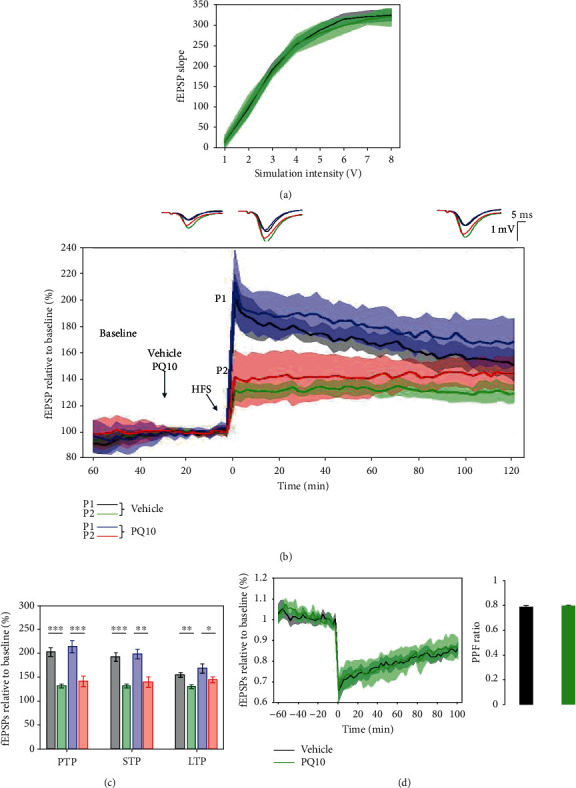Figure 14.

PQ10 did not affect field postsynaptic potentials (fEPSP1 and fEPSP2) and paired-pulse facilitation (PPF) recorded at the SC-CA1 synapse during LTP. (a) Collective input/output curves between stimulation voltage and fEPSP slope overlap, showing no significant difference in basal synaptic excitability. (b) PQ10 (n = 6) did not alter the induction and maintenance of LTP response measured from the slope of the fEPSP1 (blue) and fEPSP2 (red) as compared to vehicle-treated subjects (black and green, respectively, n = 10). Values represent averages ± 95%confidenceintervals. Outsets above LTP curves represent average waveform field potentials during 30 min baseline prior to tetanisation and 0-30 min and 90-120 min posttetanisation. Horizontal bar: 1 mV; vertical bar: 5 ms. (c) PTP, STP, and LTP responses are presented as means ± 95%confidenceintervals. ∗pvalue < 0.05; ∗∗pvalue < 0.01; and ∗∗∗pvalue < 0.001. (d) No difference in the paired-pulse facilitation of PQ10-treated and vehicle-treated subjects. The bar plot showing average PPR values during the 2-hour posttetanisation showed no significant difference between PQ10- and vehicle-treated subjects.
